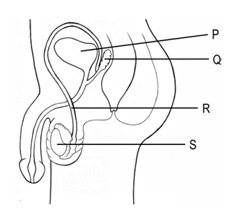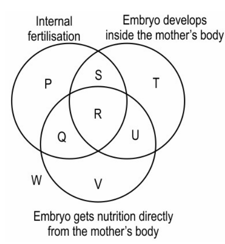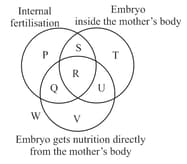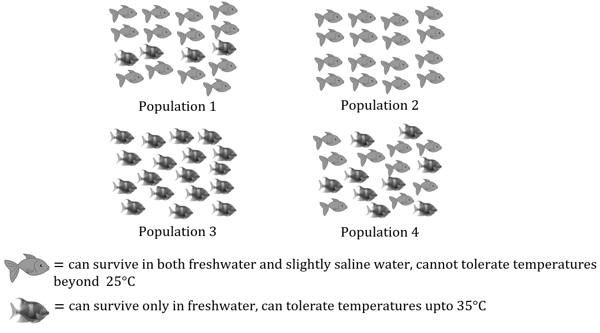NCERT Solutions for Chapter: How do Organisms Reproduce?, Exercise 1: Exercise
NCERT Science Solutions for Exercise - NCERT Solutions for Chapter: How do Organisms Reproduce?, Exercise 1: Exercise
Attempt the practice questions on Chapter 8: How do Organisms Reproduce?, Exercise 1: Exercise with hints and solutions to strengthen your understanding. Science Textbook of Competency Based Questions for Class X solutions are prepared by Experienced Embibe Experts.
Questions from NCERT Solutions for Chapter: How do Organisms Reproduce?, Exercise 1: Exercise with Hints & Solutions
The diagram shows four different populations of a freshwater fish. All fish belong to the same species but with two different adaptations.
The diagram below represents the male human reproductive system.

Identify the part that is responsible for the secretion of testosterone.
"The biological sex of an individual only depends on the sperm cell."
Is the above statement true or false? Justify your answer.
In the diagram below, each labelled region (P to W) represents a certain combination of reproductive processes found in an animal. Each labelled region is characterised by the different circles that it is (or is not) a part of.

Answer the following question based on this diagram.
Name any one animal whose mode of reproduction is represented by region P.
'In vitro fertilisation' is a process of fusing a human egg and sperm outside a woman's body, in a laboratory. After fertilisation, the zygote is allowed to develop Into an embryo for 2-6 days. The embryo is then implanted in the woman's uterus, where it develops normally. Which labelled region in the diagram BEST represents reproduction via in vitro fertilisation?

Bindu wants to produce a hybrid variety of tomatoes. She has tomato plants X and Y belonging to two different varieties, one with smooth, long fruits and the other one with wrinkled, round fruits.
Tomatoes have bisexual flowers. Bindu carries out the following steps carefully to cross pollinate the flowers of plants X and Y:
1. She removes a part of the flowers of tomato plant X just before the flowers bloom.
2. She manually pollinates the flowers of tomato plant X using pollen from the flowers of tomato plant Y.
3. She ties small plastic bags around the pollinated flowers of tomato plant X. The plastic bags are removed after a couple of days.
Bindu carried out step 1 so as to prevent self-pollination. Which part did she remove?
Plants produced through vegetative propagation are genetically identical to their parents. What could be the biggest disadvantage of vegetative propagation?
What could be the two most likely reasons for unicellular organisms to reproduce only through asexual reproduction?

